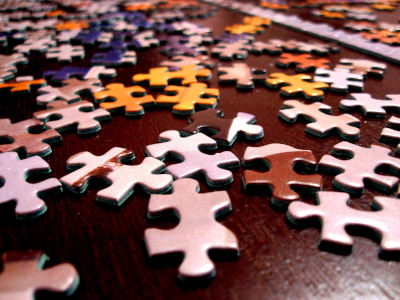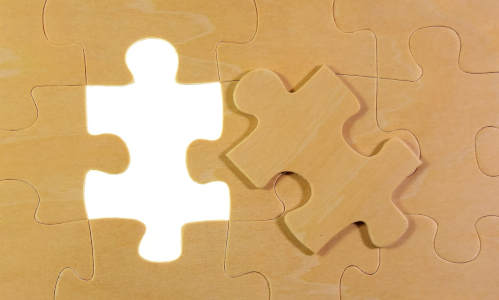
One of my favorite jigsaw counts is the 1000 piece puzzles. It’s big enough to figure out the different sections without being too easy and small enough you can place it on a kitchen table to play. As a competitive jigsaw speed puzzling participant, I know that the 1000 piece puzzles are my jam. Of course I love 500 piece puzzles and 100 pieces too. When it gets to be a little bit bigger — like the 2000 piece puzzle — I’d rather skip it as I have found my passion at 1000 pieces. Even if I am arranging the pieces or using a puzzle tray.
Solve 1000 Piece Puzzles Jigsaw Under 2 Hours? It’s Possible
Solving a 1000-piece puzzles is a jigsaw dream come true. I find it to be both challenging and rewarding. To enhance your speed and efficiency, you need to figure out what skills you have and how to improve them to make the fun of solving even more fun!
Table of Contents
Try these 14 tips and tricks on your next jigsaw puzzle play
1. Sort by Edge Pieces.
Begin by sorting out all the edge pieces. Assembling the puzzle’s border provides a clear framework and a solid starting point.
2. Group by Colors and Patterns
Group pieces by colors and patterns. This organization makes it easier to identify and connect pieces based on similar characteristics.
3. Work on Sections
Divide the puzzle into manageable sections based on colors, patterns, or distinct features. Focus on solving one section at a time before connecting them.
4. Start with Obvious Sections
Begin with sections that have obvious patterns or colors. This quick progress boosts confidence and provides a foundation for more complex areas.
5. Use Puzzle Trays or Containers
Utilize puzzle trays or containers to organize and separate pieces according to their characteristics. This minimizes clutter on your workspace.
6. Rotate the Puzzle Frequently.
Regularly rotate the entire puzzle to gain different perspectives. Viewing pieces from various angles helps identify connections and patterns more effectively.
7. Work on Details Last.
Save intricate details and challenging sections for later in the process. Completing the larger, more distinct sections first provides a clearer picture.
8. Use the Box Image as a Guide.
Refer to the image on the puzzle box frequently. This visual guide helps you anticipate the final appearance and aids in identifying where pieces fit.
9. Employ Trial and Error.
Don’t be afraid to try pieces in different positions. Experimenting with placements helps you find connections more quickly.
10. Identify and Prioritize Key Pieces.
Identify key pieces, such as those with unique patterns, colors, or distinct shapes. Prioritize connecting these pieces as they often serve as anchors for larger sections.
11. Stay Patient and Persistent.
Maintain patience and persistence. Solving 1000 piece puzzles takes time, and staying focused on the task at hand will lead to more efficient results.
12. Take Short Breaks.
Schedule short breaks to prevent mental fatigue. Stepping away and returning with fresh eyes can help you see connections more clearly. If you are working on 1000 piece puzzles give at least 20 minute breaks.
14. Engage in Multitasking.
If you’re comfortable, engage in multitasking by working on different sections simultaneously. This approach requires mental flexibility and can speed up the overall process.
15. Celebrate Milestones.
Celebrate small achievements and completed sections. Breaking down the puzzle-solving process into milestones keeps you motivated and focused.
What are some tips for staying motivated and taking breaks during the puzzling process?
Recognize the Signs of Fatigue.
It’s important to pay attention to how you feel while puzzling. If you start to feel tired or less interested, it may be a sign that a break is needed.
Taking Breaks.
When you hit a roadblock or begin to feel overwhelmed, stepping away can be beneficial. A short break allows your mind to rest and can lead to renewed vigor and a fresh perspective when you return.
Keep It Enjoyable.
Always remember that puzzles are meant to be stimulating and enjoyable, not a source of stress. If the challenge becomes too intense, it’s perfectly okay to put it aside temporarily.
Return With A New Perspective.
After taking some time off, approach the puzzle again with fresh eyes. Often, a solution that wasn’t apparent before will become clearer after a break.
What to do When a Jigsaw Puzzle is Finished?
Congrats! Once you have completed the puzzle, you have a few interesting options to consider for what to do next. Firstly, you might choose to preserve your accomplishment by gluing it together and placing it in a frame to serve as decoration and a reminder of your achievement. Alternatively, you could dismantle the puzzle and pass it on to a friend or family member who enjoys such challenges, giving it a new life and offering them the same joy. If you find the process rewarding and are seeking further improvement, consider tackling another puzzle, possibly with a higher piece count or a more complex design, to continuously hone your problem-solving skills.

Speed Puzzling Comes with Practice
What other 1000 piece puzzles advice do you have to make a fun, exciting time for play? Your own personal experience playing puzzles might be the best key to making your time faster, play stronger and your play better.
Remember, speed comes with practice, so enjoy the journey of solving the puzzle. Each completed puzzle adds to your experience and skill set. Happy puzzling!
